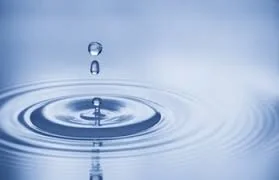The Clean Water Act
THE CLEAN WATER ACT (1972)
The Clean Water Act (CWA) is the primary federal law in the United States governing water pollution. Its objective is to restore and maintain the chemical, physical, and biological integrity of the nation's waters by preventing point and nonpoint pollution sources, providing assistance to publicly owned treatment works for the improvement of wastewater treatment, and maintaining the integrity of wetlands.
In the early 1970s, the U.S. Congress recognized a substantial threat to water as a national resource due to the rapid industrialization of the country. It is one of the United States' first and most influential modern environmental laws. As with many other major U.S. federal environmental statutes, it is administered by the U.S. Environmental Protection Agency (EPA), in coordination with state governments.
The Clean Water Act (CWA) is one of the primary federal laws in the United States governing water pollution. Enacted in 1972, the CWA's objective is to restore and maintain the chemical, physical, and biological integrity of the nation's waters. It aims to ensure that all waters are fishable and swimmable and to protect the health of people and aquatic ecosystems.
Key provisions of the Clean Water Act include:
Regulation of Pollutants: The CWA regulates the discharge of pollutants into the waters of the United States, including rivers, lakes, streams, wetlands, and coastal areas. It requires permits for point source discharges, such as industrial and municipal wastewater treatment plants.
Water Quality Standards: The CWA establishes water quality standards for surface waters, including criteria for pollutants and designated uses such as drinking water supply, recreation, and aquatic life support.
National Pollutant Discharge Elimination System (NPDES): The NPDES program issues permits to regulate point sources of pollution, such as municipal and industrial wastewater treatment plants. Permit holders must meet specific discharge limits and monitoring requirements.
Nonpoint Source Pollution Control: The CWA encourages states to develop programs to control nonpoint source pollution, which includes runoff from agricultural fields, urban areas, and forestry practices.
Wetlands Protection: The CWA regulates the discharge of dredged or fill material into wetlands and other waters of the United States, aiming to minimize adverse impacts on these critical ecosystems.
Oil and Hazardous Substances Spills: The CWA includes provisions for responding to oil spills and hazardous substance releases into navigable waters, aiming to minimize environmental damage and protect public health.
Water Infrastructure Funding: The CWA establishes funding programs, such as the Clean Water State Revolving Fund (CWSRF), to assist states and municipalities in upgrading water infrastructure, such as wastewater treatment plants and stormwater management systems.
Overall, the Clean Water Act has been instrumental in improving water quality across the United States, but challenges remain, including addressing emerging pollutants, aging infrastructure, and the impacts of climate change on water resources. Ongoing efforts to enforce and strengthen the CWA are essential to achieving its goals of ensuring clean and safe water for all.
